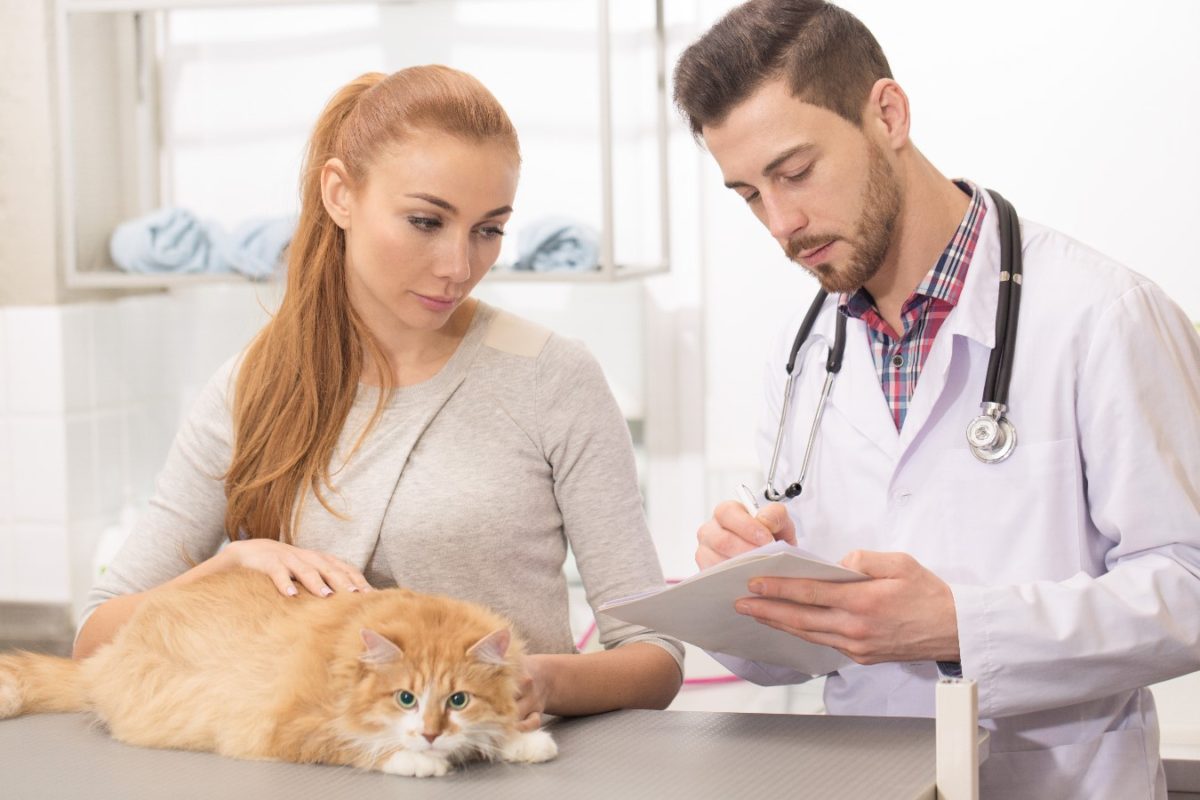Everything, Cats, Dogs, Health care, Pet Care
Thyroid Problems in Dogs and Cats
Fido or Fluffy may be lethargic. Or hyperactive. Eating less and gaining weight, or eating more and losing weight. Feeling cold. Feeling hot.The thyroid gland, which sits against the windpipe, could be responsible. Dogs aged two and up are at risk for developing hypothyroidism, a condition resulting from not enough thyroid hormone. Middle-aged and older cats may develop hyperthyroidism, which happens when too much thyroid hormone is produced. An overactive thyroid (hyper-) speeds up the metabolism and body processes, while an under active thyroid (hypo-) forces everything to slow down.
Hyperthyroidism in particular can be fatal if untreated. Treatment for hyperthyroidism reduces the amount of thyroid hormone, and for hypothyroidism, the treatment is to supplement thyroid hormone.
Signs and symptoms of hypothyroidism and hyperthyroidism
Thyroid disease can look like some other health problems. Blood tests and a list of your pet’s symptoms will help your veterinarian diagnose the condition. Only a few of these symptoms may be present.| Canine Hypothyroidism | Feline Hyperthyroidism |
|---|---|
You may observe:
|
You may observe:
|
* Interpreting blood test results
T4 (thyroxine, or tetraiodothyronine) and T3 (triiodothyronine) are the main thyroid hormones. The level of one or both of these hormones is low in hypothyroidism and high in hyperthyroidism. Normal ranges for dogs are breed-specific. The normal level of T4 goes down for cats as they age, so a T4 level in the upper part of the normal range may be fine for a younger cat, but too high for an older cat. TSH, or thyroid stimulating hormone, drives the thyroid gland to produce more T4 and T3. When it’s high, it’s working overtime to stimulate the thyroid, which indicates hypothyroidism. Often, though, it isn’t high even when hypothyroidism is present. A too-low TSH level means that the thyroid is producing more than enough hormone, and indicates hyperthyroidism. Hypothyroidism in dogs is often caused by antibodies. Positive levels of antibodies may be present in hypothyroidism. Your veterinarian will have preferred tests to do for dogs and cats. Sometimes further testing beyond the standard tests is necessary.Treatment of canine hypothyroidism
Synthetic T4 hormone, given twice daily, is the standard treatment. Common brand names for dogs are Soloxine, Thyro-Tab, and Synthroid. Some dogs may do better on natural, desiccated thyroid containing both the T4 and T3 hormones; a common brand name is Armour. After treatment is started for hypothyroidism, blood tests should be redone in about six weeks. Watch for symptoms to change. You may see the beginnings of improvement within in a week, while some problems may take months to improve. Treatment is for life.Treatment of feline hyperthyroidism
Your veterinarian can help you choose between the three standard types of treatment. If your cat has kidney disease, the only option is medication, since the other two treatments may worsen kidney failure and are irreversible. Look for changes in one to three weeks, and ask your veterinarian when to return for follow-up blood tests.Radioactive iodine (I-131) treatment
When radioactive iodine is injected into a hyperthyroid cat, it destroys abnormal thyroid tissue, but it doesn’t harm the rest of the body. Advantages:- It cures feline hyperthyroidism in 90 percent or more of cases.
- It’s permanent.
- No surgery is required.
- Cats must be isolated at a special clinic for about one to two weeks after treatment.
- Cats must be kept away from small children and pregnant women for up to two weeks after they return home, and their litter box contents require special disposal during this period.
- Possible side effects are decreased renal function in cats with kidney disease, and hypothyroidism.
- It’s expensive.
Surgery to remove affected thyroid gland tissue (a thyroidectomy)
Advantages:- It requires hospitalization for only one day, and not much follow-up care.
- It’s permanent.
- No isolation is required.
- It risks damage to the neighboring parathyroid glands.
- Hyperthyroidism may recur even after surgery.
- It’s expensive.
Antithyroid medication
Methimazole (brand name Tapazole) is the usual medication. Advantages:- Surgery or separation from your cat isn’t necessary.
- The initial cost isn’t high.
- It comes in pill, liquid, and gel form, so the dose is easy to titrate.
- It must be given two or three times daily for the rest of the cat’s life.
- It costs hundreds of dollars a year.
- If the cat has a thyroid tumor (the most common cause of feline hyperthyroidism), the tumor may continue to grow.
- Tapazole occasionally has (sometimes temporary) side effects, such as vomiting and appetite loss. Less common side effects include lethargy, hair loss, liver damage, anemia, bone marrow suppression, and decreased white blood cell counts.


